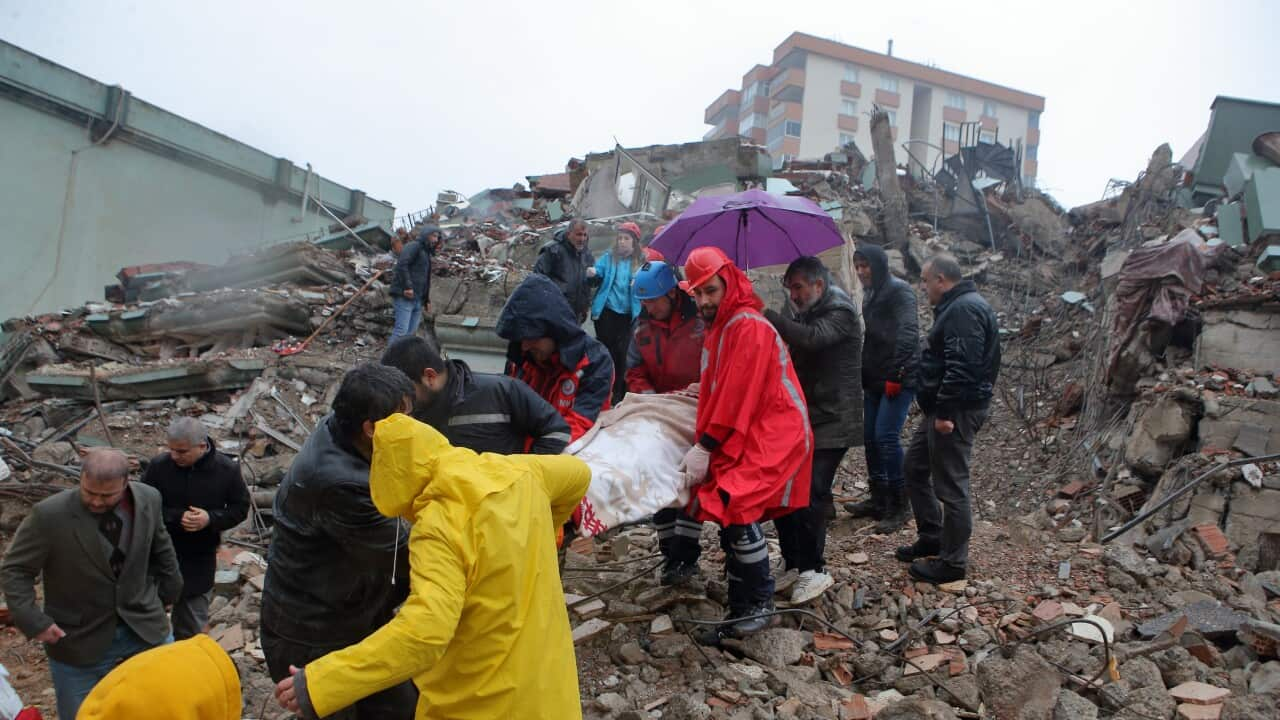Key Points
- A 7.8 magnitude earthquake hit Turkey and Syria early on Monday.
- It was followed by a series of aftershocks, including one that registered 7.5 magnitude.
- Experts say the poor construction of many buildings in the region significantly contributed to the devastation.
At least 4,300 people are dead and thousands more injured after a major earthquake and a series of aftershocks hit southeastern Turkey and northwestern Syria on Monday.
Seismologists say it will likely be the deadliest quake this decade.
Why did it cause so much damage?
The impact of the earthquake
"It's a very, very well known, very high-hazard, very high seismic risk area," Mark Quigley, associate professor of earthquake science at the University of Melbourne, told SBS News.
At 7.8 magnitude, the initial quake was very strong and caused a lot of damage, but it was also followed by a series of aftershocks, including one that registered at 7.5 magnitude. On average, there are fewer than 20 earthquakes over 7.0 magnitude in any year.
The quake also originated around just 18 kilometres below the earth's surface, leading to more intense shaking.
Associate Professor Quigley said the initial quake had over 20 per cent of the ground acceleration of gravity, exposing hundreds of thousands of people to "very strong shaking".
"We typically think a lot of these types of buildings in this area start to be damaged and fail at about half that, so 10 per cent of the ground acceleration of gravity," he said.
The shaking from the 7.5 magnitude aftershock was even stronger with 50 per cent of the ground acceleration of gravity, likely damaging buildings that weren't affected by the initial quake.
See where the earthquakes and aftershocks have struck
The buildings
Photos of the affected areas also show a lot of buildings weren't constructed to survive such strong earthquakes, Associate Professor Quigley said.
"Basically, the floors of the building have not been able to withstand what we call the 'shear loading' - the shaking of the ground back and forth, and they've basically pancaked and killed lots of people that were in those buildings at the time," he said.
"That could relate to construction practices, it could relate to building design, it could relate to materials, but it's a complicated issue.
"We're in a place where you have millions of displaced refugees, we have big challenges in this region already, so prioritising strong buildings may or may not be the biggest priority at all times."

A 17-year-old girl being rescued from under the rubble of a collapsed building in Elbistan district in southern Turkey's Kahramanmaraş Province. Source: Getty / Anadolu Agency
"That would be reduced by at least 50 per cent, simply because the buildings would not totally collapse," he told SBS News.
"They kind of bend and experience damage, which can be repaired quite easily afterwards without having them totally fall down, he said.
The time
The first quake struck at around 4am local time on Monday, when many people would have been asleep.
"They [would have been] trapped inside when the building started collapsing on them, Associate Professor Ahmed said.
"At that time [of night] it's very hard for people to make a decision to take shelter under a table, or go to a corner where things may not fall so easily."
With Reuters









